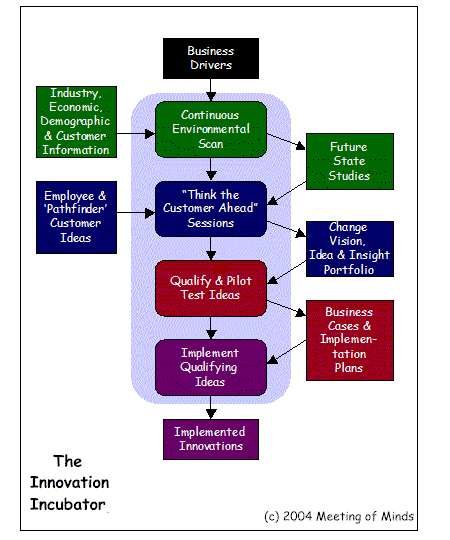 Think of a corporation like a human body. To be healthy, the body needs to take in sufficient and appropriate nourishment, exercise, and avoid behaviours known to cause disease and injury. Likewise, a corporation needs to ‘invest’ in people, technology, infrastructure and innovation — the nutrients of business growth — ‘exercise’ that investment to generate revenue, and avoid the behaviours (bad decisions, bad acquisitions, letting the competition inflict a beating on you) that lead to corporate ‘illness’ and ‘injury’. By this analogy, the corporate model of the 1990s was the body-builder — investing heavily in food, and exercising to build muscle and strength and speed and resilience. The catchwords of the day were innovation, knowledge, human and intellectual capital. There was even talk of a ‘war for talent’, an acknowledgement that bright, creative people were so valuable that companies would fight over them. Investments with long-term value are called assets, and the corporation of the 1990s generated wealth and growth by investing in assets. By contrast, the corporate model of this decade is the dieter — staying healthy by eating as little as possible, spot-exercising and using diuretics to reduce every visible ounce of fat, forgoing muscle and strength and speed and resilience for the appearance of health. The catchwords today are cost-management, outsourcing, offshoring, and risk management. Focus is on short-term, quarter-over-quarter bottom-line change, and the corporation of today generates wealth by eliminating costs. Both mechanisms, carried to an extreme, are unhealthy. The body-builder can cheat and create artificial ‘assets’ with steroids. Enron did exactly that, puffing up its balance sheet with non-existent assets. The dieter’s extreme is called anorexia, and it’s an insidious and self-perpetuating disease. You lose weight, and for awhile everyone tells you you look better. So you lose more, and eventually you get obsessed with your weight, and then you reach a wall where you can’t lose any more, and it starts to affect your mind so you can’t function properly anymore. Then it gets worse. I believe what we’re seeing in the corporate world today is corporate anorexia. I described last week the horrendous 9-step race-to-the-bottom that has driven corporations to abandon quality, sacrifice domestic workers, and gouge and sue customers in the never-ending, desperate attempt to keep in the good books of insatiably demanding shareholders. You can see the unhappiness in the faces of today’s executives, and the weakness and vulnerability of the depleted corporations that they lead in their financial statements and forecasts. Meanwhile, fawning consultants, instead of warning about the shortage of innovation, investment and long-term strategy, are making excuses for it. It’s insane, it’s unsustainable, it’s bad for consumers, workers and the economy, and it’s irresponsible. You can no more cut your way to corporate greatness than you can starve yourself to health. The cure for corporate anorexia is as difficult as the cure for the human illness. And as with the human illness, it’s going to take a ‘support group’, people beside corporate managers who will be patient and understanding as the patient at first may get sicker before they get better. That means shareholders will have to abandon their absurdly unrealistic expectations of perpetual double-digit profit growth, and recognize that the real value of the stocks they hold is probably only a quarter to a third what they’re currently valued at — a bitter pill to swallow for which greedy brokerage firms also share responsibility. It also means shareholders must learn to think, and assess their investments, over the longer term. Innovation takes time to generate a return, especially when many corporations are essentially starting from zero — much of today’s R&D expenditures are spent on incremental and copycat products that produce safe but paltry revenue improvement. Innovation also entails risk, and that means spending money on ideas that fail in order to learn and to generate the blockbuster successes that draw on those failures, which in turn means some short-term adverse earnings trends (which are currently brutally punished in the marketplace). It also means deferring profits to build back the infrastructure and ‘muscle’ that can once again start generating new revenue from new products, new channels, quantum-leap process improvements, new technologies and other true innovations. While investors will need to be patient, the professions that advise and monitor corporations and their management — consultants, investment analysts, accountants, and government agencies — need to take the lead and lay out a roadmap back to sustainable corporate health, and explain it and ‘sell it’ to managers and investors.
Recovering from a debilitating disease is a slow and difficult process, especially when the patient is still in denial. But before Western corporations infect the entire economy with anorexia — as the current wave of myopic downsizing, outsourcing and offshoring threatens to do — we need to recognize the illness for what it is, and start working together to nurse the patient back to health. (The Innovation Incubator pictured above is a service of my consultancy, Meeting of Minds) |





“Think of a corporation like a human body.”:Just a quick one before I log off for the night: look up Stafford Beer’s “Viable Systems Model”, which is a model for organizational structure and dynamics based on a cyberneticists’ take on viable living systems. In particular, look at http://www.greybox.uklinux.net/vsmg_2.2/ for the VSM applied to co-operatives, which have some characteristics in common with your NE model. I’d like to see a description of NEs from the VSM viewpoint.(For a fascinating and poingnant Beer story, Google for “cybersyn chile”.)